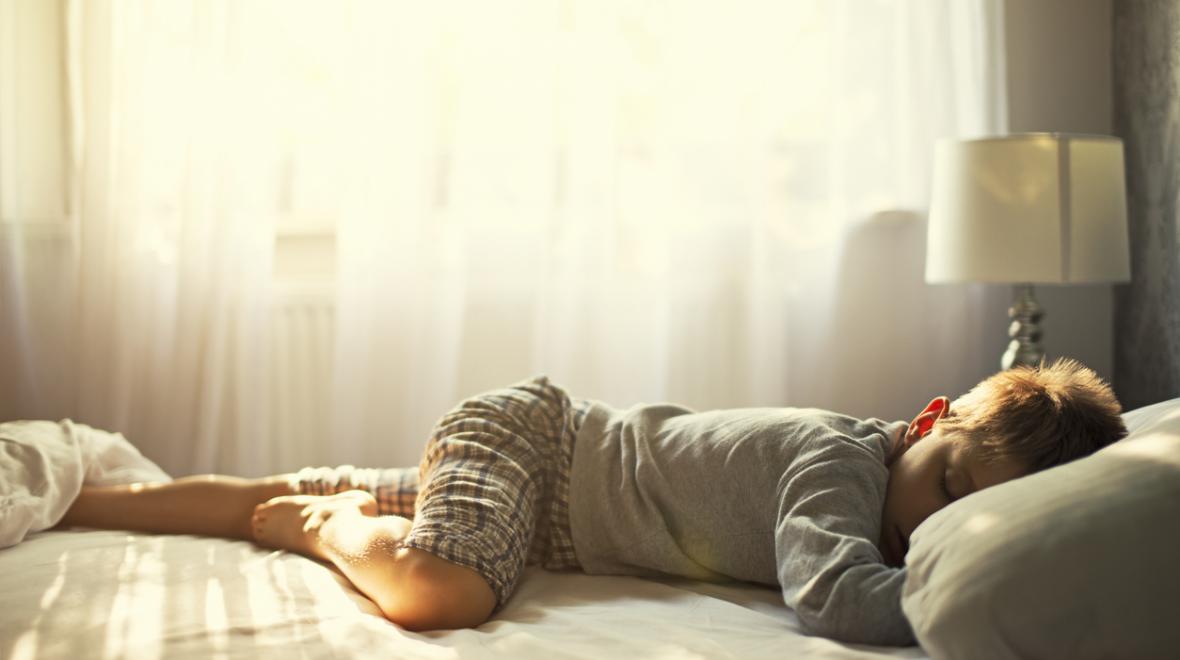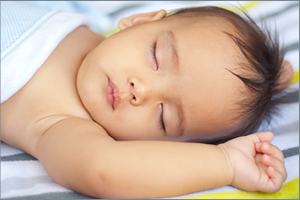
Every night, a silent thief steals sleep from children of all ages. This furtive bandit leaves kids cranky and inattentive, hampers school-day success, and puts kids at risk for a wide range of health ailments, from depression to ADHD. It’s restless legs syndrome (RLS), and it affects an estimated 1.5 million children and teens, according to the Restless Legs Syndrome Foundation.
This disorder is well known for keeping adults awake with leg pain, creepy-crawly sensations and a strong urge to move their limbs at night — but many parents don’t know that it’s a common pediatric sleep problem, affecting around 6 percent of children, according to a recent study.
Read on for 10 surprising facts about RLS, and how parents can arrest this sleep thief.
Surprisingly common
According to the Mayo Clinic, RLS is underdiagnosed in children, and it’s an often overlooked factor in childhood sleep problems. Lenora Lehwald, M.D., assistant professor of clinical pediatrics at Ohio State College of Medicine, notes: “Pediatric restless legs syndrome is more prevalent than we realized before. Parents will recognize that a child doesn’t sleep well, but they don’t consider RLS unless they’re asked very specific questions about the symptoms.”
Family matters
If parents have restless legs, kids are more likely to have them, too: Family history is a significant risk factor for the disorder, according to new research. This is good news, because a child’s family history can help point the way to a correct diagnosis. And scientists are uncovering genetic risk factors for RLS — findings that could help pave the way for future research and treatment.
A “growing” problem
Increased understanding of RLS is prompting doctors to view “growing pains” — sharp aching in the lower legs at night — in a new light. Kids who complain of “growing pains” may actually have RLS, says Lehwald. Though occasional growing pains probably aren’t cause for concern, children should see a physician if growing pains are a nightly occurrence.
Trauma-rama
According to chiropractor Perry Chin, board member of the Gonstead Clinical Studies Society, RLS may be related to a series of falls or trauma to the spine or legs. “Toddlers and young children who are just learning to walk and run have abrupt falls all the time,” he says. “Generally, it’s not one fall but a series of falls that can cause a misalignment of the spine and lead to RLS symptoms.”
Delicate diagnosis
There is no conclusive medical test for RLS, so doctors rely on patients’ descriptions of symptoms. That can make diagnosis difficult for very young children who can’t describe painful sensations or restlessness. RLS is suspected in children if there is a strong family history of the disorder, says Maida Chen, M.D., associate director of the Pediatric Sleep Center at Seattle Children's Hospital. An overnight sleep study can also help doctors make a diagnosis by showing whether a child’s limbs are moving at night.
Nutrition necessities
Research shows a strong link between iron deficiency and RLS; in a recent Mayo Clinic study, 83 percent of children with RLS had low iron levels. When RLS is suspected, doctors often order a blood test to determine if ferritin (stored iron) is lower than normal, and prescribe supplementation or dietary changes if needed.
Restless arms
Restless legs syndrome isn’t limited to the legs: The characteristic creepy-crawly, tingly feeling can show up in the arms, too. Parents should take note if a child complains of unusual sensations or discomfort in any limbs.
Tiny legs
Children of all ages can have RLS, including young infants — and unlike older children, a baby can’t tell his parents why he can’t sleep. “If I see a baby who can’t sleep as a normal baby would, or perhaps a baby who can take daytime naps but is irritable and can’t sleep at night, I may suspect RLS, especially if there is a family history,” says Lehwald.
Natural comfort
Though prescription medications are available for RLS, many parents and health-care providers prefer to try natural remedies first; treatments such as massage and chiropractic adjustment are effective and free from side effects. Chen recommends a bath before bed along with a nightly massage.
Sleepless legs
Getting enough high-quality sleep helps control the severity of RLS symptoms, says Chen. Chronic overtiredness can worsen restless legs, so an age-appropriate bedtime and good sleep habits are especially important for children with RLS or a family history of the disorder.
Chen hopes more parents will recognize RLS and take steps to help children get relief, because quality sleep is vitally important to young kids. “If we can get some of these kids identified, we can help kids sleep, which may help kids in school and in life,” she says. “Let’s make sure that kids are getting as much sleep as they can.”
Relief for restless legs
Fight the overtiredness that can worsen symptoms and promote deep, restful sleep with these tips:
- Maintain an appropriate bedtime and a consistent bedtime routine.
- Ensure that your child’s sleeping space is quiet, cool and dark.
- Ask a physician to evaluate levels of stored iron (ferritin).
- Encourage moderate amounts of physical activity (too much activity can aggravate symptoms).
- Try a soothing bath or massage before bed.
|












